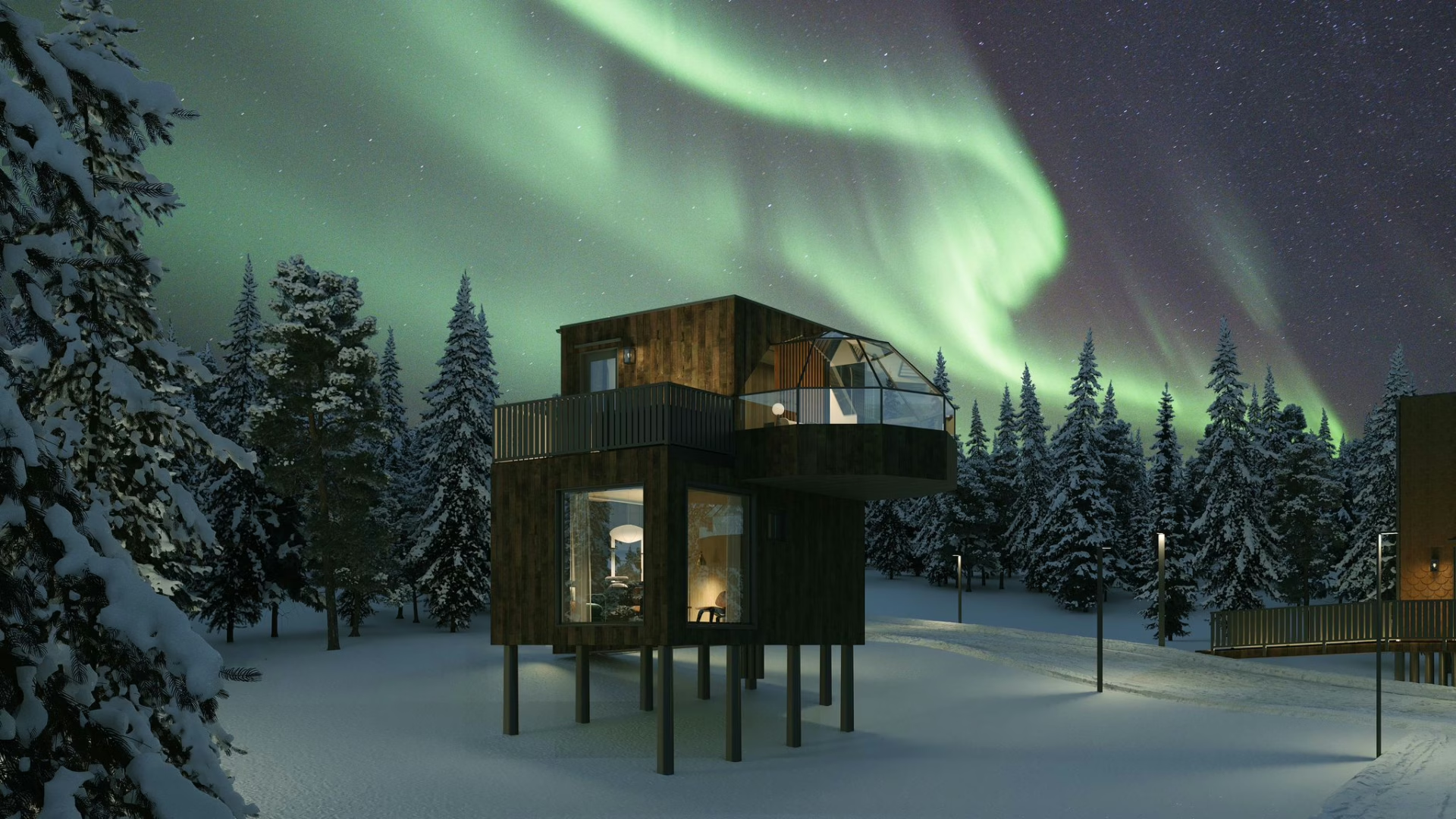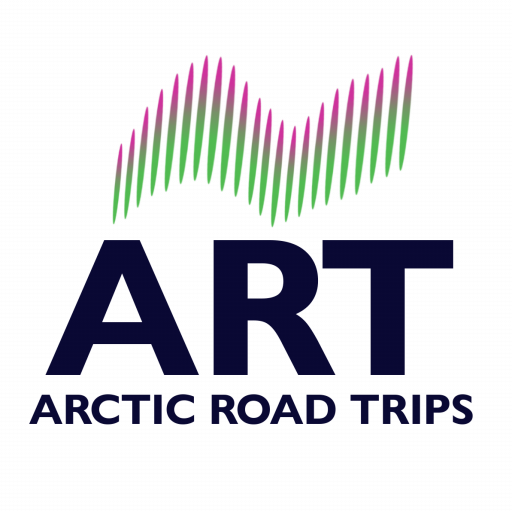Aurora – all you need to know
Everything you need to know about Aurora before your Trip!
What colour do Northern Lights have and why?
The most common colour to see Northern Lights with eyes is grey–green. This green colour of the Northern Lights is created when oxygen molecules (O2+) collide with charged particles from the solar wind.
If the solar activity is strong, there is the possibility to also see pink Auroras appearing on the sky. This chemical reaction with nitrogen (N2) happens closer to earth (around 80 to 100 kilometers above the earth’s surface).
In rare cases red Northern Lights can be visible. They are created when charged particles react on a very high altitude with atomic oxygen (O). Red Auroras can be quite often captured by camera, but are usually seen by eyes only during bigger solar events.
There are also other colours like white or orange that can rarely appear on the sky. It’s important to know that there is a difference what Aurora colours and intensity our human eye can see and what a professional camera can capture. Read further!
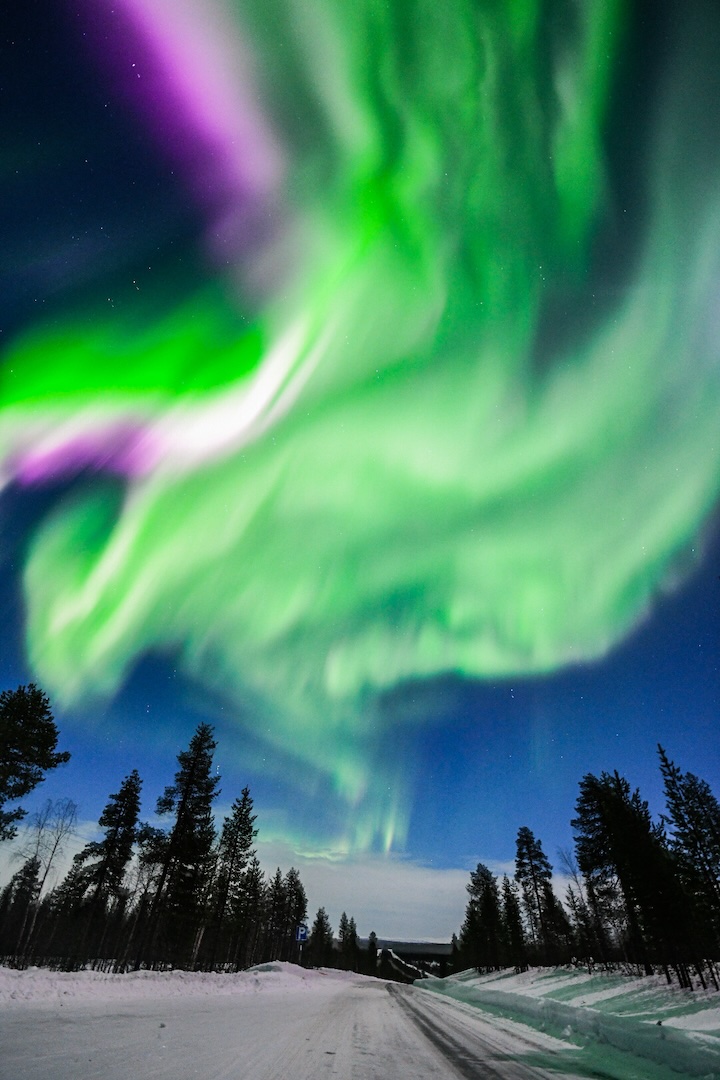
Big pink and green dancing Northern Lights
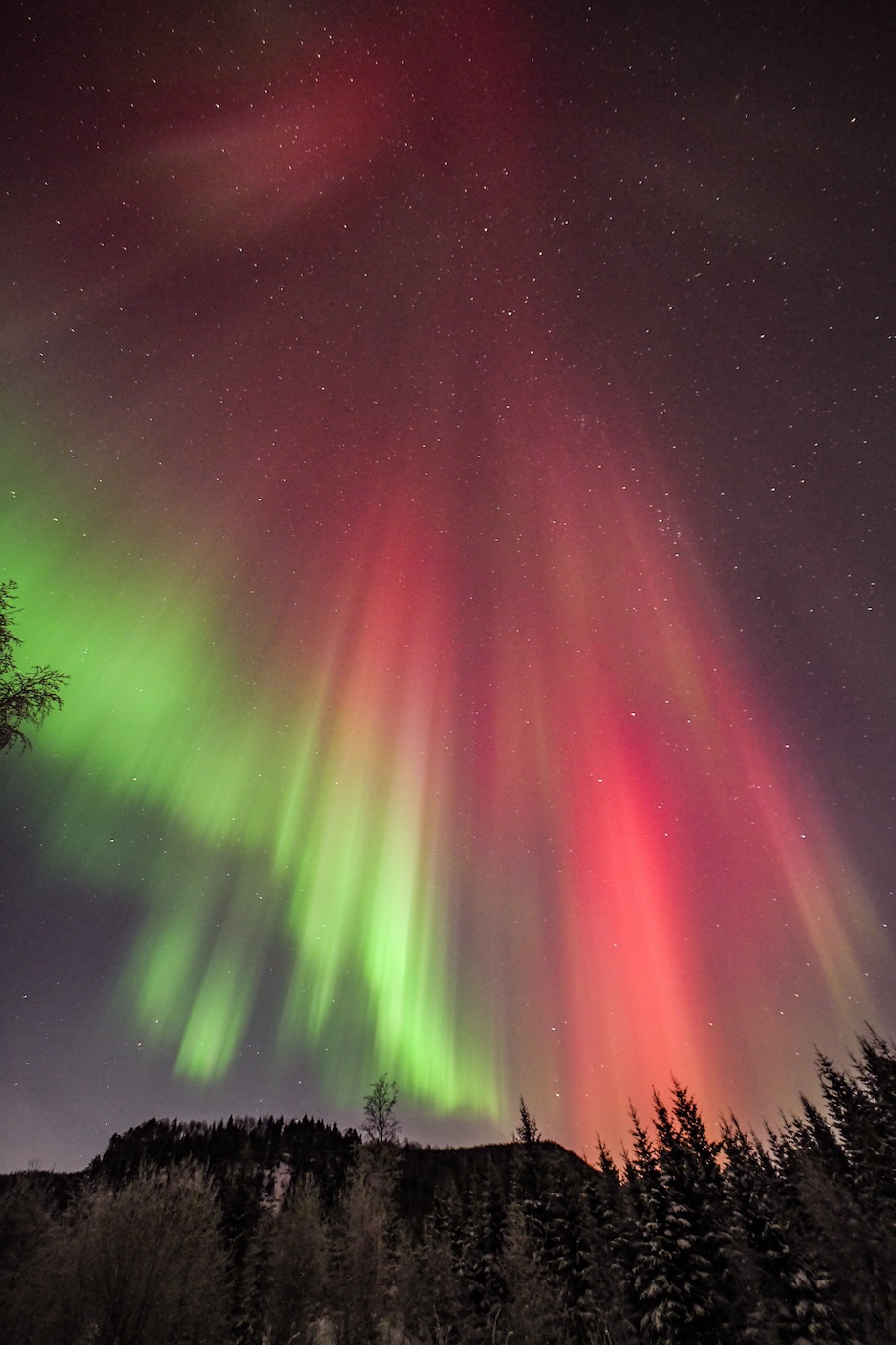
Rare red Northern Lights during a stong CME (corona mass ejection)
Aurora with eyes VS. with camera
There is a significant difference how our human eye sees the Aurora Borealis and how a camera can capture it. Many people think Northern Lights are always very bright and totally green – like on the photos. But with bare eyes Auroras are not as bright and green as on photos. They appear more light green to grey/green and less saturated. If Northern Lights get very pink, the colour is well visible also with naked eyes. Red Northern Lights can be quite often captured by camera, but happen by eye usually only during bigger events in the solar wind. But it’s not only about colours, it’s also about the intensity of the Northern Lights.
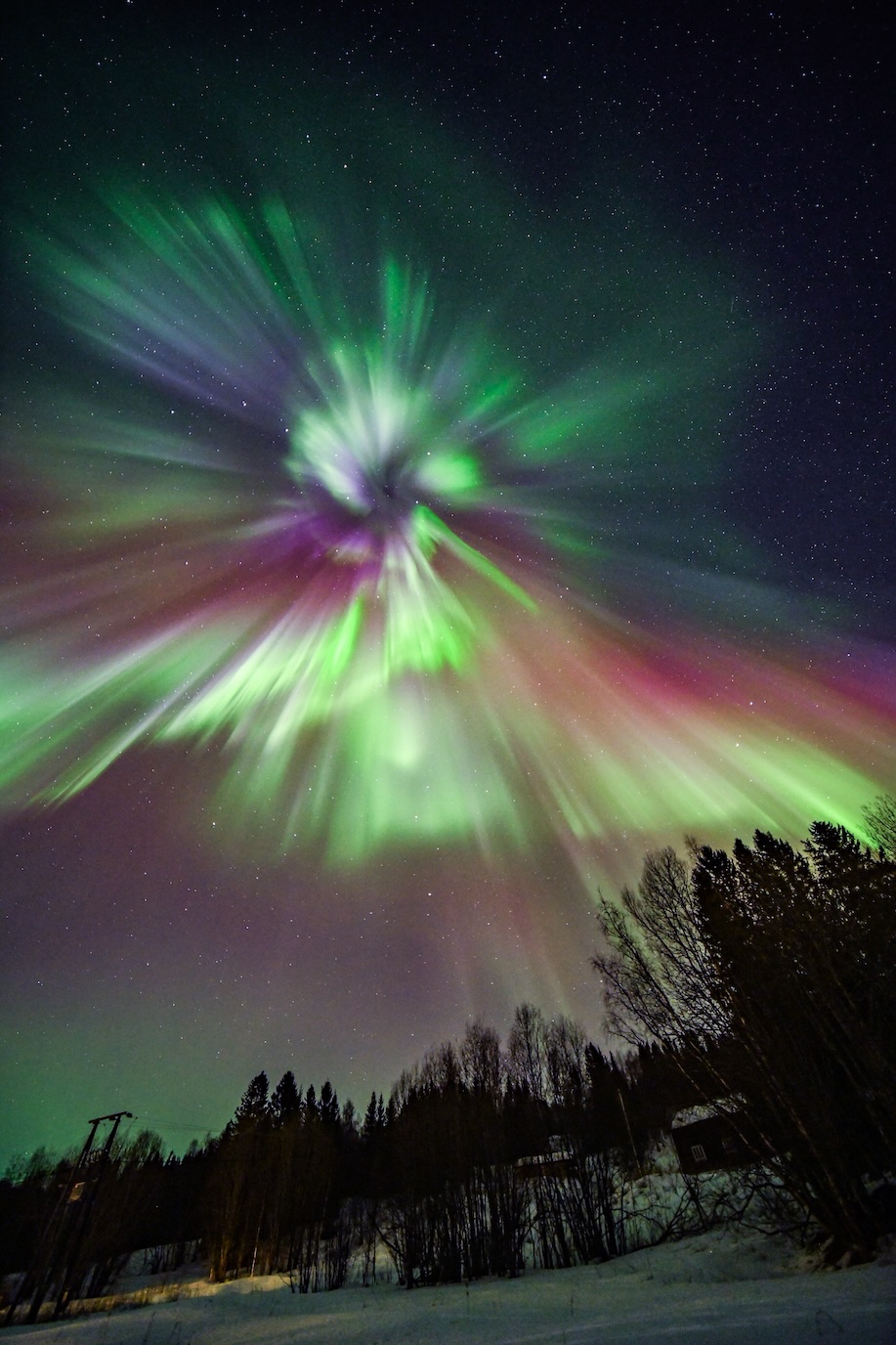
Big Aurora captured on camera
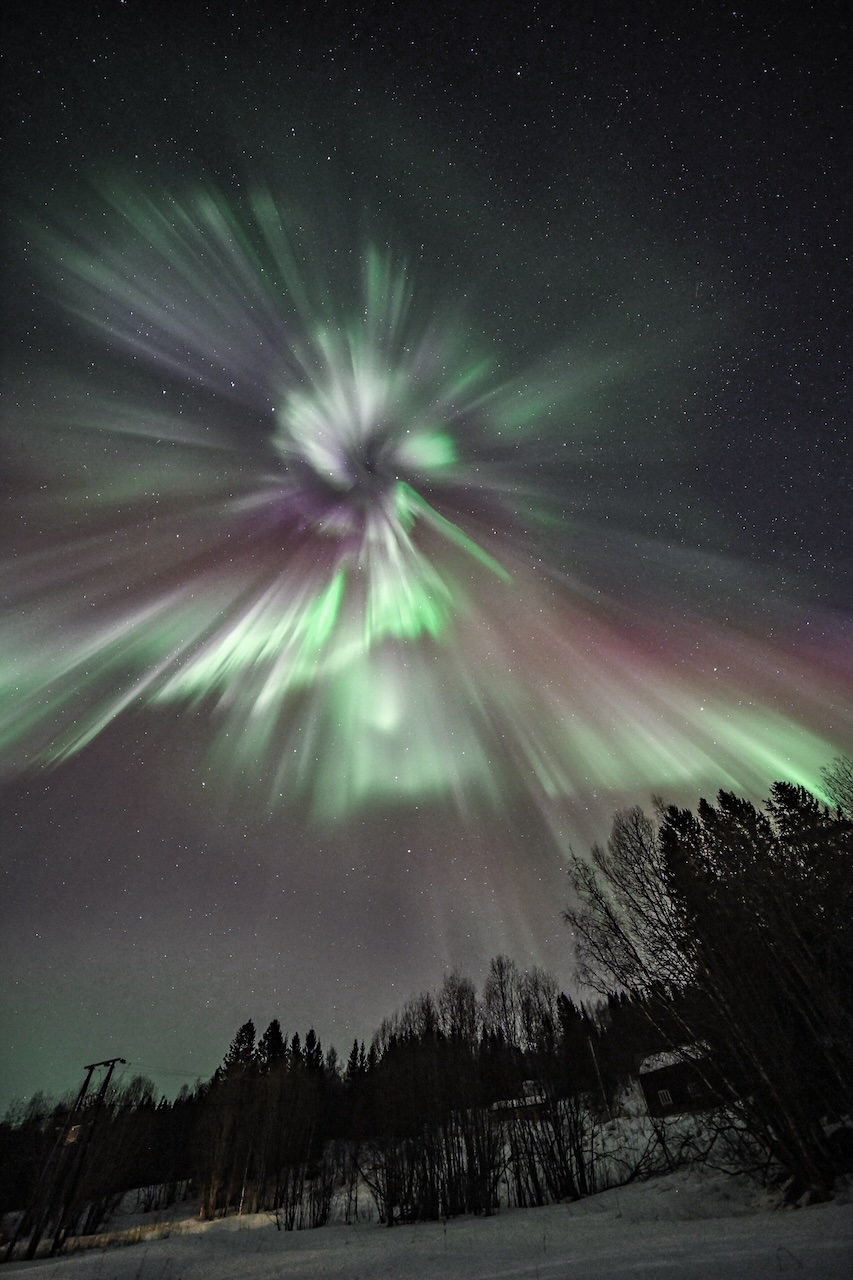
Same photo adjusted for comparable bare eye view
Aurora intensity
The Northern Lights are natural phenomenon and their intensity is depending the aurora activity every specific night. Typically, in 95% of the nights the Aurora activity is strong enough to see some Aurora. But the Aurora intensity varies. Some nights there is only a faint line on the horizon while some nights the Aurora can light up the whole sky. We don’t have any impact on that. We created the Aurora Road Trips so we have the best chances to maybe also see a bigger Aurora in a small amount of time. How does it work you might think? With our Road Trips we hunt the Aurora more nights in a row and always try to be at the best spot regarding altitude and weather.
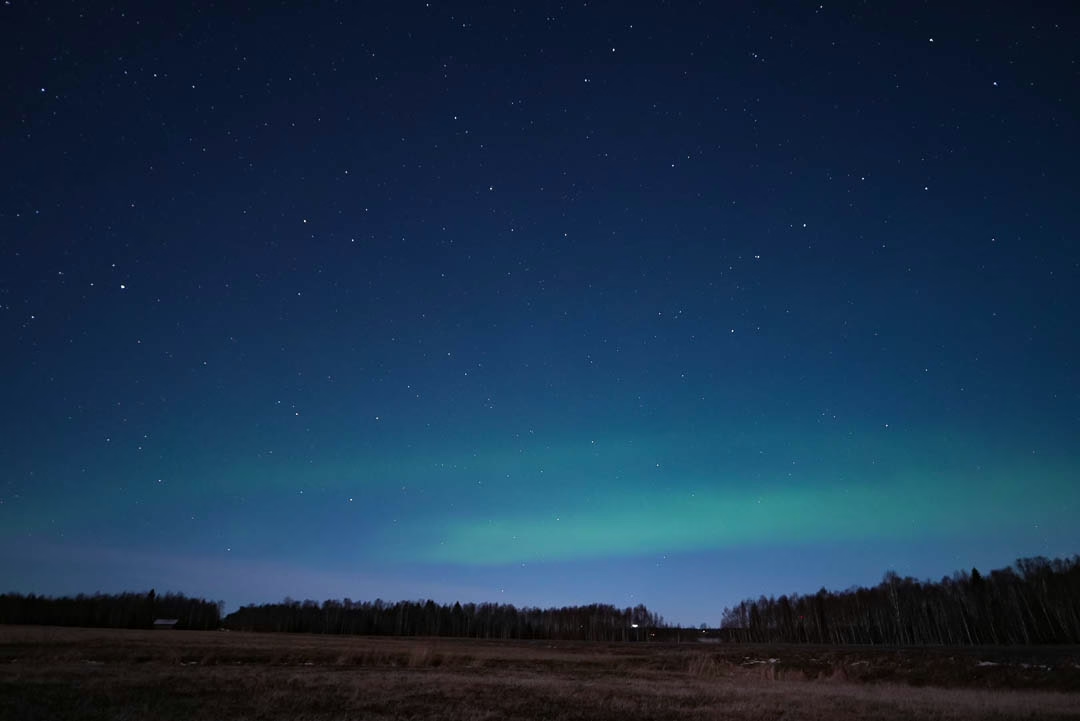
Very small Aurora close to the horizon
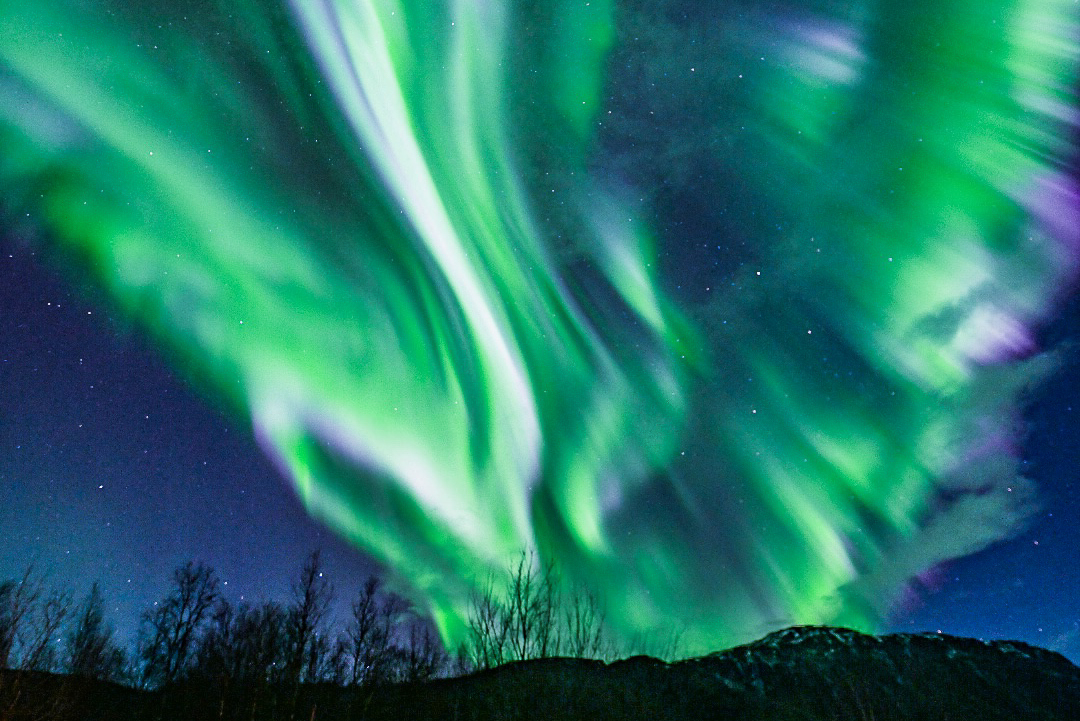
Huge Aurora substorm lighting up the whole sky
How are Northern Lights created?
Northern Lights are created by an interaction of the solar wind with the magnetosphere. Charged particles coming from the sun are hitting different gas particles in the ionosphere. This collision releases photons (=light). Depending on what is happening on the surface of the sun, the the solar wind varies every day, even every minute. That’s also why it is so hard to predict the Northern Lights. We use different tools like to check current aurora activity. But heads up – the KP index or other simplified Aurora predictions do not really work.
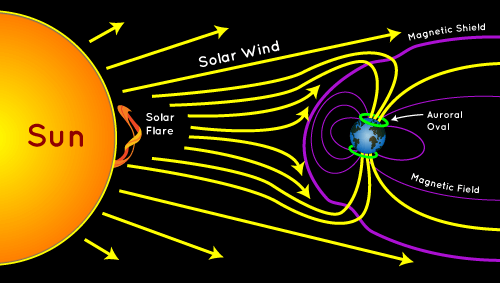
Source: https://spaceplace.nasa.gov/aurora/en/
Can you take photos of the Aurora with a phone?
The newer phones, especially the Iphone 15 pro or the Samsung Galaxy S23 Ultra, allow you to get decent photos of the Aurora. They have a great night mode that allows a long exposure time. It’s best if you bring a tripod because otherwise you won’t be able to hole your phone still. If you have a camera always bring it together with a tripod and a wide angle lens with a low aperture.
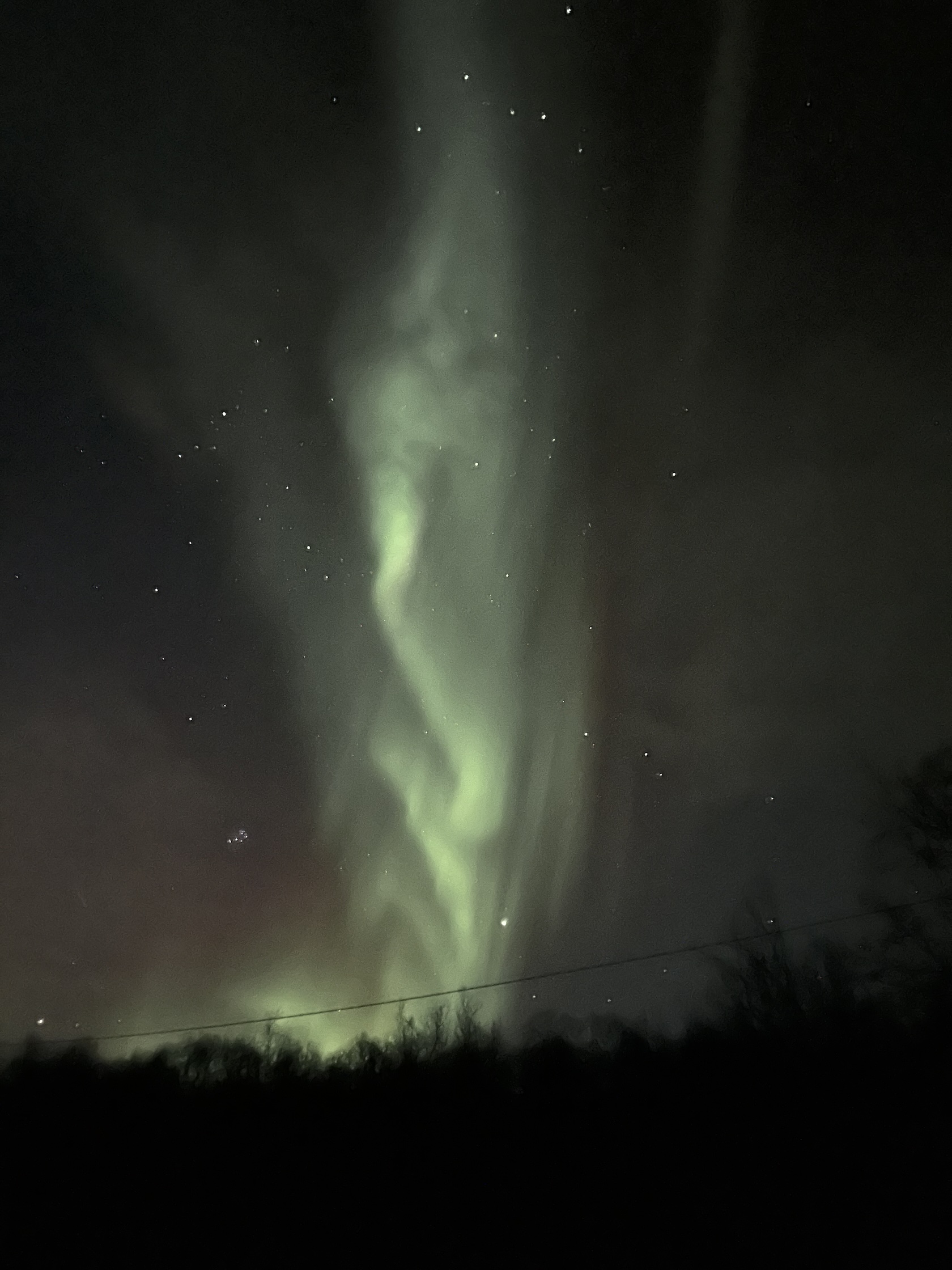
Northern Lights photo taken with Iphone 14 Pro
When can the Northern Lights be seen in Lapland?
A common assumption is that Northern Lights can only be seen in winter. This is by far not true. Actually the autumn month September and October as well as spring month February to early April also give amazing chances to see the Northern Lights. Why? Read further!
What are the best month to see the Northern Lights in Lapland?
The Northern Lights in Lapland can be seen for around eight month a year, from end of August until early April. The best chances to see Northern Lights are usually in September, October, February, March and early April. The weather conditions are typically a bit better and the equinox effect has a slight impact and boosts the Aurora activity. If you join one of our Aurora Road Trips all month are good to see them. Why? Because we have such a big radius where we can travel to find clear skies and to go north. In the very north Northern Lights can be nice also with smaller activity.
Best months for Travelling in Lapland
Further, it’s great to travel in Lapland during the autumn and spring months because days are longer, so you have time for other activities. In September and October lakes and rivers won’t be frozen yet and you can see the reflection of the Northern Lights in the water. In January, February and March you’ll have a snowy scenery.
If you wanna know more about when is the time to see the Aurora and travel in Lapland read our detailed page:
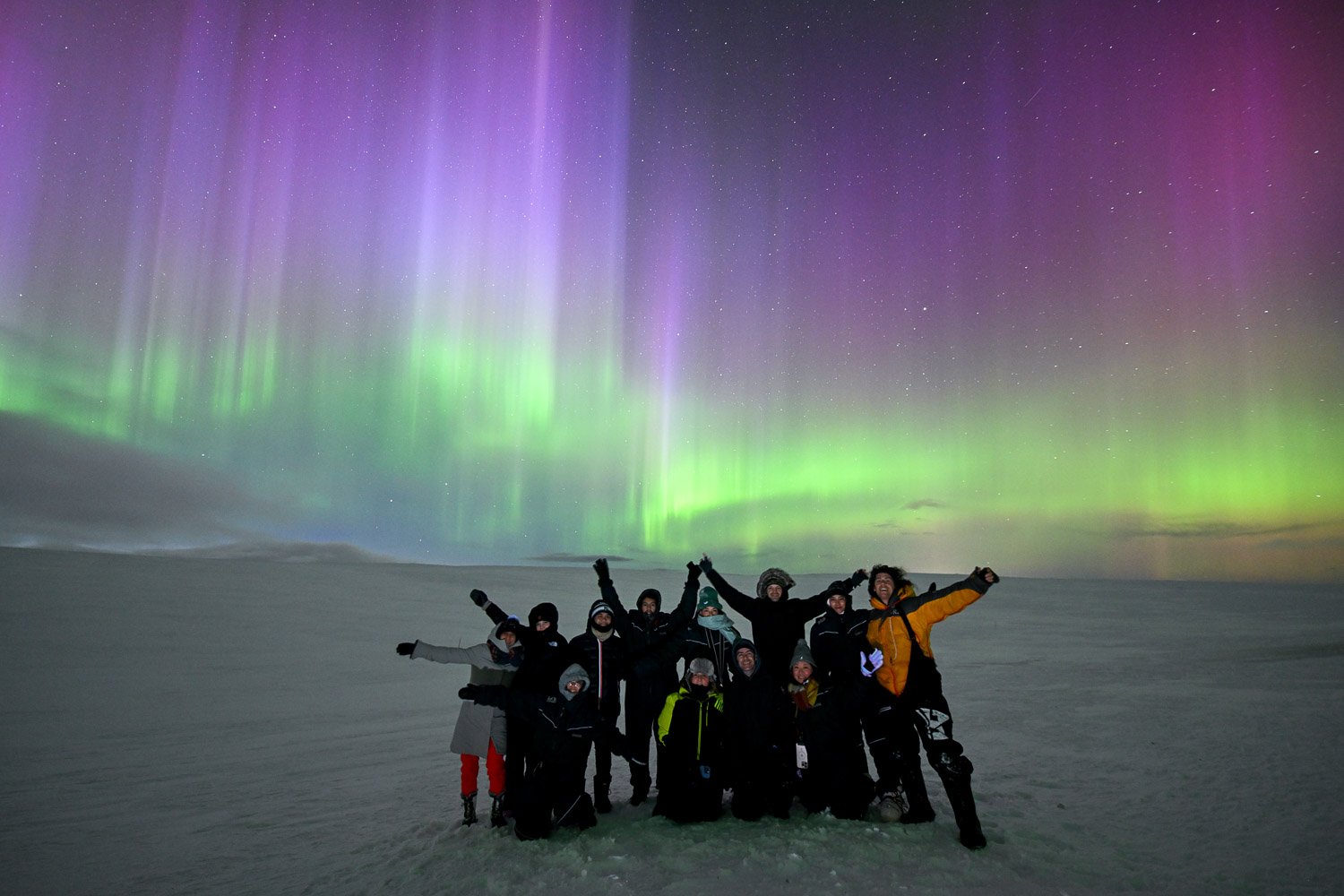
"How long should I stay in Lapland to have a good chance to see the Northern Lights?"
The longer you stay the better get your chances to see the Northern Lights. We would suggest to stay at least 3-4 nights to have a safer chance. In November and December you should calculate even around one week because from our experience weather conditions are worse.
Do not plan only to stay one night to see the Aurora in Rovaniemi! Yes, the Aurora happens in 95% of the nights, but that does not mean it is visible in all those nights. If the Aurora can be seen depends from the weather, meaning the cloud coverage. The chemical reaction releasing photons (= light) happens between 80 and 500 kilometers above earth, so if clouds are in between Auroras cannot be seen.
That’s exactly the reason why our Aurora Tours and Road Trips are so mobile and spontaneous. Rovaniemi itself is often cloudy, that is why our tours are designed to be a real Aurora Hunt in order to escape the clouds. Of course not even that is possible every single night, but if it is we are ready to drive you to the best possible spot – also if it is 400 kilometers away. On our One Night Aurora Tourswe have had so far a Aurora success rate of 98% (100% in Aurora Road Trips). 98% why? Because in some night we managed to get to totally clear sky, but the Aurora did not show up.
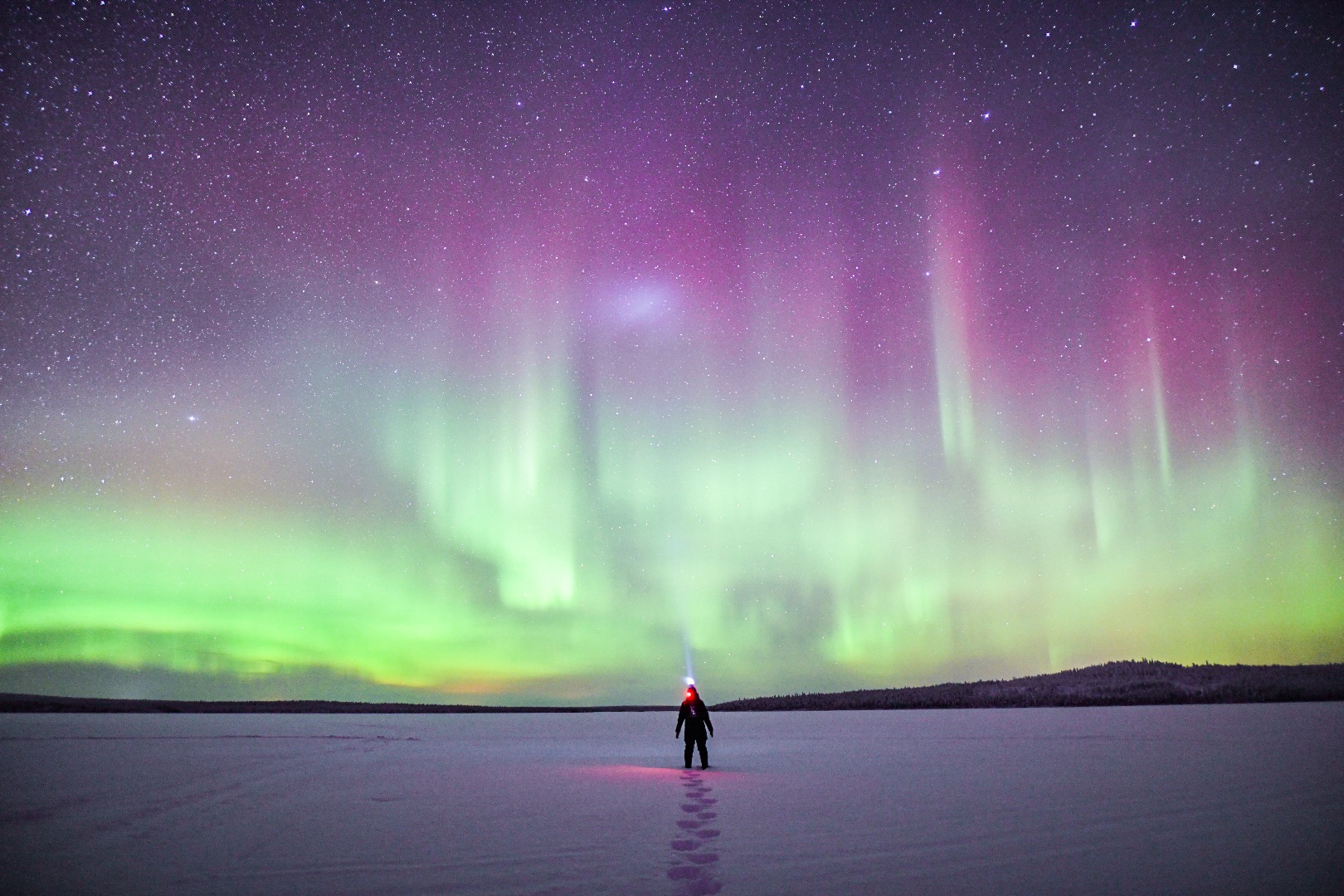
For a successfull trip we suggest:
Do not book a glass igloo JUST to see the Aurora
Glass igloos are a truly magical experience, but do not book them in order to maximise your chances to see the Aurora. As explained, in the last section before there is one issue: There is the chance that the location of the glass igloo is cloudy. This can happen especially if you book only one or two nights. Also, not all glass igloos are located in great places to see the Northern Lights. Some glass igloos have the glass window facing the wrong cardinal direction or have lots of lights around them. If you still don’t wanna miss out on the experience, we created a igloo as good as possible to see the Aurora: Skyview Igloos
Do not book a Husky, Reindeer or snowmobile tour at night JUST to see the Aurora Borealis
All those experiences are great and fun, but they are carried out in the same place every single night regardless the weather. Plus you did not see the landscapes because it was dark.
